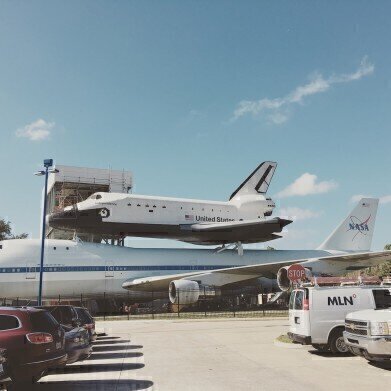GC, MDGC
Find Out How NASA Detects Alien Life with Chromatography
Jul 05 2015
Two scientists from the University of Kansas in the United States have developed a new technology which could help NASA to detect the signs of alien life on Mars. The technique works by combining Raman spectroscopy with gas chromatography and mass spectrometry (GC-MS) to identify condensed aromatic carbon, believed to be the chemical consequence of extra-terrestrial life.
The announcement comes after last year’s revelation that NASA had developed nanoflow liquid chromatography. This method, also designed to attempt to scan for signs of alien life, allowed scientists to analyse miniscule samples harvested from space dust.
Life on Mars?
Scientists, astrologists and other technicians working today on researching the Red Planet almost unanimously agree that the likelihood of alien life surviving on Mars today is incredibly low. This is due to the extremely harsh conditions prevalent on the planet now, in terms of light, temperature and proximity to the Sun. Such beliefs have been corroborated by the unmanned probes sent to the planet by NASA and other space institutions.
However, these probes have turned up limited evidence that water did exist on Mars, thus fuelling the theory that life existed there at one point. Ever since such findings were struck upon, scientists have struggled to consolidate the evidence behind the theory.
Alison Olcott Marshall, one of the two scientists behind this most recent project and associate geology professor at the University of Kansas, has called these findings encouraging. “There has been a tremendous amount of very exciting findings this year that Mars once contained actively flowing, low-saline, near-neutral-pH water – pretty much the type of water where you find life on Earth today,” explained Alison.
Combining Two Technologies
Alison and her husband, Craig Marshall, have worked to develop a technique which will provide more reliable evidence that alien lifeforms once existed – or at least, had the potential to exist – on Mars.
“If we’re going to identify life on Mars, it will likely be the fossil remnants of the chemicals once synthesized by life, and we hope our research helps strengthen the ability to evaluate the evidence collected on Mars,” Craig told the University of Kansas website.
The new technique works by combining Raman spectroscopy with GC-MS. The former technique, of which Craig is an expert, is able to scan for carbonaceous materials in a sample. However, alone it is insufficient. This is because while it is able to detect the presence of carbon, it can’t explain the origins of the substance.
However, by using GC-MS to supplement the technique, the Marshalls hope to provide a better insight as to where the carbon came from and thus shine a light on the possibility of alien inhabitation of Mars. Mass spectrometry itself has had a long history of aiding NASA missions, as was celebrated last year at the 62nd ASMS Conference on Mass Spectrometry and Allied Topics. Hopefully, this novel method of implementing the technique can answer the age old question posed so eloquently by David Bowie – was there life on Mars?
Digital Edition
Chromatography Today - Buyers' Guide 2022
October 2023
In This Edition Modern & Practical Applications - Accelerating ADC Development with Mass Spectrometry - Implementing High-Resolution Ion Mobility into Peptide Mapping Workflows Chromatogr...
View all digital editions
Events
ACS National Meeting - Fall 2024
Aug 18 2024 Denver, CO, USA
Sep 04 2024 Chiba, Tokyo, Japan
Sep 04 2024 University of Warwick, Coventry, UK
Sep 10 2024 Rockville, MD, USA
Plastics Recycling World Expo Europe
Sep 11 2024 Brussels, Belgium














